Physics
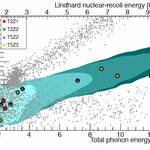
The Super-CDMS dark-matter search has released two days ago the results from the analysis of nine months of data taking. The experiment has excellent sensitivity to weak interacting massive particles producing inelastic scattering with the Germanium in the detector.
The detector is composed of fifteen cylindrical 0.6 kg crystals stacked in groups of three, equipped with ionization and phonon detectors that are capable of measuring the energy of the signals. From that the recoil energy can be derived, and a rough estimate of WIMP candidates mass. The towers are kept at close to absolute zero…
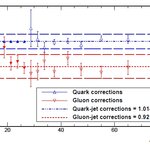
Do you remember the CDF Dijet bump at 145 GeV? In 2010, CDF published a paper that showed how the same data sample of W + jet events where they had previously isolated the "single-lepton" WW+WZ signal also presented an intriguing excess of events in the dijet mass distribution, in a region where the background -dominated by QCD radiation produced in association with a W- fell smoothly. That signal generated some controversy within the collaboration, and a lot of interest outside of it. It could be interpreted as some signal of a new technicolor resonance !
After the original publication, an…
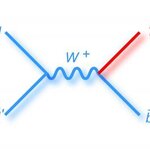
The Fermi National Accelerator Laboratory is still getting important particle work done, years after the closure of the Tevatron was announced.
Scientists on the CDF and DZero
experiments have announced that they have found the final predicted way of creating a top quark, completing a picture of this particle that has been nearly 20 years in the making.
The collaborations announced late last week that they had observed one of the rarest methods of producing the elementary particle – creating a single top quark through the weak nuclear force using the "s-channel." For the analysis, they sifted…
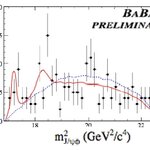
The Y(4140) state, a resonance found in decays of the B meson to J/ψ φ K final states, is the protagonist of a long saga. Originally it was obseved by CDF in 4 inverse femtobarns of Run 2 data by Kai Yi, a very active "bump hunter" in the experiment - and I want to add, a successful one!
Kai had to withstand a very long review process within the collaboration before the evidence for the new particle could finally be published; and the addition of more data to the analysis, one year afterwards, left many in CDF with the suspect that the particle was maybe there only in the eye of the…
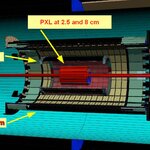
Microseconds after the big ban happened the universe was a superhot, superdense primordial soup of “quarks” and “gluons,” particles of matter and carriers of force.
The quark-gluon plasma cooled almost instantly but it set the stage for the universe we know today and to better understand how the universe evolved, a quark-gluon plasma is being reproduced in giant particle accelerators like the Relativistic Heavy Ion Collider (RHIC) at Brookhaven National Laboratory (BNL), where the Solenoidal Tracker at RHIC ("STAR") experiment has been collecting and analyzing data for the past decade.
Now…

I have decided to rescind this model because it is not logically consistent, the great gap was between the field equation and equations of motion. I completely accept that scalar gravity models as they appear in the literature are inconsistent with large amounts of data showing that starlight is bends due to gravity. Many of those models do have the magnitude of bending in time and space consistent with data, but since the two change in the same way, there is no bending. I will see if I can create a logically consistent model where the changes in time and space are of the same magnitude,…
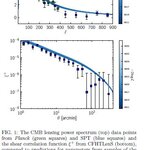
Recent Planck spacecraft observations of the Cosmic Microwave Background (CMB) – the fading glow of the Big Bang – have highlighted a discrepancy between cosmological results and predictions from other types of observations. The CMB is the oldest light in the Universe, and its study has allowed scientists to accurately measure cosmological parameters, such as the amount of matter in the Universe and its age. But an inconsistency arises when large-scale structures of the Universe, such as the distribution of galaxies, are observed.
By combining results from the Planck spacecraft and…

In the 'sometimes what you don't find can be important too' department, a new high-accuracy calibration of the LUX (Large Underground Xenon) dark matter detector's sensitivity to ultra-low energy events strongly confirms the result that it did not find low-mass dark matter particles last summer during its initial run.
Dark matter is thought to account for about 80 percent of the mass of the universe, with dark energy a smaller fraction and what we recognize as matter a daunting tiny amount. Though it has never been detected directly, its existence is a near certainty among physicists…

I believe I am not alone in being fascinated by the ongoing debates about this or that physics experiment being on the verge of destroying the Earth. Microscopic black holes produced by mistake in particle physics experiments sinking down to the center of the Earth and slowly eating us out, small black holes used as "clean" bombs, antimatter weapons, strange-matter bits gradually engulfing everything around.
It is quite entertaining and it would be even good for physics outreach if spun the right way, but unfortunately we should not trust too much the sense of humour of our political leaders…
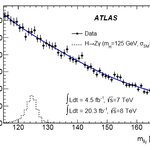
The ATLAS collaboration at the Large Hadron Collider, CERN's 8-TeV proton-proton collider now being recommissioned to run at the close-to-design energy of 13 TeV in 2015, has published a few days ago on the Cornell ArXiv the result of a search for Higgs bosons decaying to Zγ pairs.
The final state is in principle easy to trigger, identify, and reconstruct - the Z boson is well measured in its decay to electron-positron or muon pairs, and the energetic photon is tagged by an electromagnetic deposit in the calorimeter to which no charged track is pointing. However, the smallness of the signal…